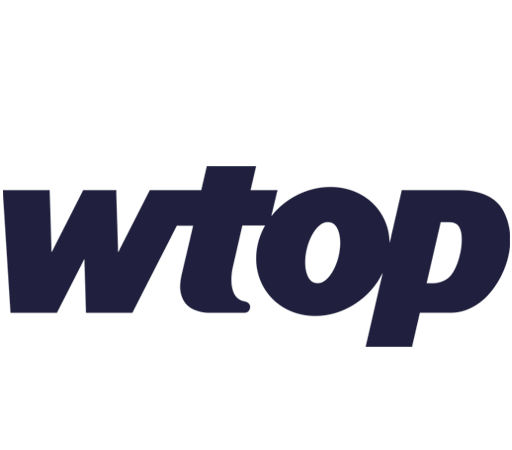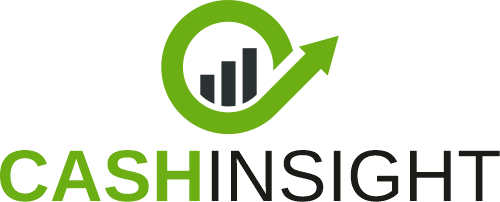
Through mid-November, the returns of initial public offerings have slowed, and the Renaissance IPO Index stands at a gain of…
Through mid-November, the returns of initial public offerings have slowed, and the Renaissance IPO Index stands at a gain of 5.1% year to date, lagging the S&P 500 (up 16.4% by market price over the same period). That flips the script from three months ago, when the IPO index was up 11.7%, moderately outperforming the S&P 500.
[Sign up for stock news with our Invested newsletter.]
Globally, IPOs are in great shape, with the Renaissance International IPO Index up 40.3% year to date, while the iShares MSCI ACWI ex US ETF (ticker: ACWX) is up 30.2%. On the downside, IPO activity is light right now, mostly due to the longest-ever U.S. government shutdown, which has spooked Wall Street and has forced bigger IPO candidates to the sidelines. More modest direct listings like WeShop Holdings Ltd. (WSHP) and Firefly Automatix Inc. (FFLY) have been the hottest names on the IPO calendar lately, as bigger IPOs bide their time.
Still, with the holidays on the horizon and the U.S. House set to vote Nov. 12 on ending the government shutdown, hope springs eternal in the IPO market, which usually kicks into higher gear when stocks do better. The S&P 500’s 17% six-month run-up is evidence enough of that.
“We may still be six weeks shy of the end of 2025, but it has been a banner year for IPOs,” says Angelo DeCandia, professor of business and accounting at Touro University. “Not surprising given that most market indices are at all-time highs, an open invitation to new companies and their investment bankers to ‘jump right in, the water’s fine.’”
DeCandia says it’s “obvious” that the best time to raise equity capital is when stock prices are high, indicating that investors are hungry to buy IPO shares. “This year has been an absolute bonanza in that regard,” he says. “As usual, technology is leading the way, with artificial intelligence pushing the envelope. In many ways, the environment is similar to the dot-com era, with everyone afraid of missing out on the next big thing.”
Yet IPO investors shouldn’t toss dollar bills around without a plan. “Just like the dot-com phase, there’s an inherent risk that investors are being indiscriminate and may rue the day when the dust settles in 2026,” DeCandia says. “Even once-in-a-lifetime developments like artificial intelligence cannot produce an unlimited number of winners, and reality may set in for investors at the inevitable shakeout down the road.”
So which new IPO names stand out as investors start planning for 2026 in earnest? Here’s a look at several of the bigger fish on the market, and one smaller one with growth potential:
| NEW/UPCOMING IPO | INITIAL/ESTIMATED VALUATION |
| CoreWeave Inc. (CRWV) | $23 billion |
| Chime Financial Inc. (CHYM) | $11.6 billion |
| Circle Internet Group Inc. (CRCL) | $8.1 billion |
| Netskope Inc. (NTSK) | $8.8 billion |
| Figma Inc. (FIG) | $19.3 billion |
| Shein | Up to $66 billion (est.) |
| Canva | $42 billion or more (est.) |
| Regentis Biomaterials Ltd. (RGNT) | Up to $61 million (est.) |
CoreWeave Inc. (CRWV)
CoreWeave’s share price has been in freefall of late, sliding 36.8% over the past three months and 36.2% over the past month. Yet there’s plenty to like about the stock, especially when you get the chance to buy it at a significant dip in price. On Nov. 11, CRWV reported that in its most recent quarter, it had an earnings-per-share loss of 22 cents, which was better than the loss estimate by Wall Street analysts. Additionally, projected revenues are at a lower $5.05 billion to $5.15 billion range, slightly below analyst estimates.
The stock, which is trading around $88 per share in mid-November, has more than doubled its initial $40 share price from its March IPO, as the company has launched into a slew of new investments and partnerships.
An early-June, $7 billion cloud computing leasing partnership with Applied Digital Corp. (APLD) has contributed significantly to that growth, as CoreWeave has added several of the Magnificent Seven tech giants to its roster of high-profile clients. Additionally, in mid-July, CoreWeave’s share price popped by 9% after it announced a $6 billion investment in a new AI-focused data center campus in Lancaster, Pennsylvania.
Chime Financial Inc. (CHYM)
This U.S. digital bank’s stock price is down 32.5% over the past three months, but it’s showing signs of coming alive in late 2025 and early 2026.
The company recently reported 29% year-over-year revenue growth for the third quarter, significantly outpacing CHYM’s previous guidance. Earnings before interest, taxes, depreciation and amortization, or EBITDA, margins rose by 9 percentage points over the same period, and the company has seen its active member list grow by 21% over the past year, most of them in the under-40 demographic the company seeks to attract.
The new Chime card, which offers 1.5% cash back, is attracting more users. That suggests the company’s share price still doesn’t reflect its financials, which may be why CHYM shares have risen 15% in the past week alone. CHYM shares began trading in June, with the stock exploding 37% on its first day.
Circle Internet Group Inc. (CRCL)
This USDC stablecoin provider has also seen its share price drop significantly, with CRCL shares down 39% over the past three months and 26% over the past month. Market watchers cited a rise in the company’s full-year expense outlook, even though Circle beat earnings estimates for the third quarter, reporting EPS of 64 cents and $739.8 million in revenue.
Analysts say that Circle is in a good spot right now, as cryptocurrencies continue to rise in stature and in investment accounts. “Circle Internet Group’s entry into public markets highlights the mainstreaming of digital assets,” says Kaush Amin, head of private market investing at US Bank. “Circle Internet Group’s IPO success shows that clearer rules from regulators and robust compliance allow crypto-adjacent businesses to access public capital at scale.”
Although J.P. Morgan recently kept its “underweight” rating on CRCL, it raised its price target to $93. Meanwhile, Gus Gala, a market analyst at Monness, Crespi, Hardt, initiated coverage with a “buy” rating and a $150 target price, citing growing demand for stablecoins and their impact on key issues such as U.S. dollar dominance and robust global value-transfer opportunities.
Netskope Inc. (NTSK)
This cybersecurity company launched its IPO in September and rose above $22 per share on its first day of trading, 18% above its $19 opening price. That boosted NTSK’s valuation to roughly $8.8 billion.
The company’s stock price seems to be holding steady, trading at $22 per share as of Nov. 11, and poised for share growth after multiple Wall Street analysts issued positive calls. Jonathan Ho, a stock analyst at William Blair, issued an “outperform” call on the stock in mid-October, citing Netskope’s hybrid work-friendly platform solution, which “allows customers to have a more secure, better-performing, data-centric and modernized network security capability.”
Baird followed with a “buy” rating and a $27 target price, primarily due to Netskope’s competitive advantage in the AI-driven security space.
Figma Inc. (FIG)
Figma shares have bounced around since its July 31 IPO, with shares priced at $33 out of the gate, then skyrocketing to $120 within 24 hours. FIG shares moderated at $70 per share in late August, but have fallen to $44 per share in mid-November. The San Francisco-based technology company, which specializes in AI-powered design platforms that enable seamless collaboration across the entire product-development lifecycle, still offers investors plenty of growth potential.
“Figma’s IPO is another standout,” Amin says. The company’s valuation surge after Adobe Inc.’s (ADBE) failed acquisition shows investors still reward innovation. Plus, IPOs like FIG set the tone for where public market growth capital wants to go: AI, digital asset platforms and fintech.
Citing robust network effects, Amin says Figma’s success “shows that strong user communities and high switching costs still command a premium multiple in the markets.”
Wall Street analysts agree, with Goldman Sachs recently hiking its target price on FIG to $54 per share, while J.P. Morgan boosted its target price to $60 per share.
IPOs to Watch Going Into 2026
Shein
With a valuation reportedly in the $66 billion range (for now), fashion retail behemoth Shein could be an IPO powerhouse when it goes public, which could still occur in 2025.
The Singapore-based retailer, which is nearly listed on the Hong Kong exchange HKEX, is a good example of an IPO brand developing outside the technology sector, a healthy sign for global IPOs overall. “Together with industrial and infrastructure issuers preparing U.S. filings, names like Shein show the window is broadening beyond tech,” says Alex Tsepaev, chief strategy officer of B2Prime Group. “If conditions hold in 2026, the IPO cycle could regain the balance of volume, quality and performance last seen four years ago.”
Shein certainly qualifies on the financial front. In early November, Shein issued an upbeat earnings outlook, highlighting reported net income of $2 billion for 2025, despite new U.S. tariffs.
Canva
The buzz surrounding Canva, Australia’s largest private technology company, is that the graphic design software company will trade on the Nasdaq by 2026, but there’s no official announcement yet. The company has $2.6 billion in annual revenue and has claimed seven consecutive years of consistent profitability, which should resonate with IPO investors.
Canva co-founder Cliff Obrecht sees an upside in going public sooner rather than later. In a recent podcast on venture capital-based 20VC, Obrecht said conditions could be prime for a Canva IPO, with a valuation potentially higher than the reported $42 billion in late 2025.
“As a late-stage private company with the likes of all the big cats that are playing in public markets … our obligations and expectations to beat and raise are very much the same,” Obrecht said. “It does get me thinking — what’s the real difference?”
“When the public markets were valuing companies lower than the private markets, it was like, whatever, but now at a lot higher marker, it’s become more appealing,” Obrecht added.
Regentis Biomaterials Ltd. (RGNT)
At $11 million, this IPO deal may look relatively small, as the company is scheduled to go public on Nov. 14. But the firm has the potential to grow quickly and robustly over the next year, and should present opportunities for bargain-minded investors, DeCandia says.
Regentis is a regenerative medicine company focused on developing tissue repair solutions that improve the quality of life for patients who have suffered serious impairment from torn tissues. “Currently, the company is focused on a product which will help repair articular knee cartilage, a product with no shortage of clients in a world of aging populations,” DeCandia notes.
In particular, Regentis has positive operating income of $1.15 million over the trailing 12 months, a remarkable number for this early in the company’s history. DeCandia said the company had negative free cash flow in the same period, but companies at this stage of growth need to build out their infrastructure and tend to burn through cash quickly.
“All in all, however, this is a comparatively small number,” he adds. “Any analyst may ask how they are financing current operations, but a quick look at their income statement numbers will reveal their pre-IPO strategy. With a ratio of interest expense to income of 2.18 and an income of $1.15 million, we can calculate their interest expense as equal to $2.507 million.”
The anticipated equity capital infusion from the Regentis IPO will eliminate the need for that debt expense unless the company chooses to retain it to fund higher growth. “Regardless of their decision, the IPO proceeds will certainly alleviate the pressure of outstanding debt at this stage of their growth. That is certainly good news for both the company and the incoming new shareholders,” DeCandia says.
A New Round of IPO Contenders Is Shaping Up
Market experts say the current IPO landscape isn’t limited to a single sector.
“While tech and AI infrastructure players such as CoreWeave are leading the charge, health tech companies like Omada Health, fintech names such as Circle, consumer brands, clean tech and life sciences are also drawing significant attention,” says Sasha Morozova, capital markets service leader at Dallas-based Riveron, a business advisory firm. “Investors are gravitating toward businesses with proven track records and established products, which supports larger capital raises and more substantial IPOs.”
Many analysts say that overall, the market feels balanced. “That’s the case with sellers ready to exit strong companies and buyers eager to invest in businesses that were previously inaccessible in the public markets,” Morozova says.
Additionally, many companies considering IPOs are deliberately taking the time to build the infrastructure, governance and profitability needed to instill investor confidence.
“Some have filed confidentially, giving themselves the flexibility to wait for optimal market conditions or pursue a dual-track strategy,” Morozova says. “The focus is on preserving optionality to achieve the highest possible valuation rather than rushing into the public markets.”
One good example is Wealthfront, which has filed confidentially but is “continuing to strengthen governance, improve profitability and expand its product offering while it waits for the right window to launch,” Morozova says.
More from U.S. News
10 of the Best Bank Stocks to Buy for 2026
2025’s 10 Best-Performing Stocks
10 Best Value Stocks to Buy Now
8 New and Upcoming IPOs in 2025 and 2026 originally appeared on usnews.com
Update 11/12/25: This story was published at an earlier date and has been updated with new information.


